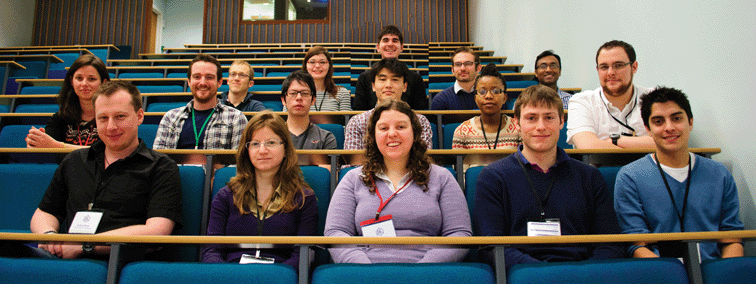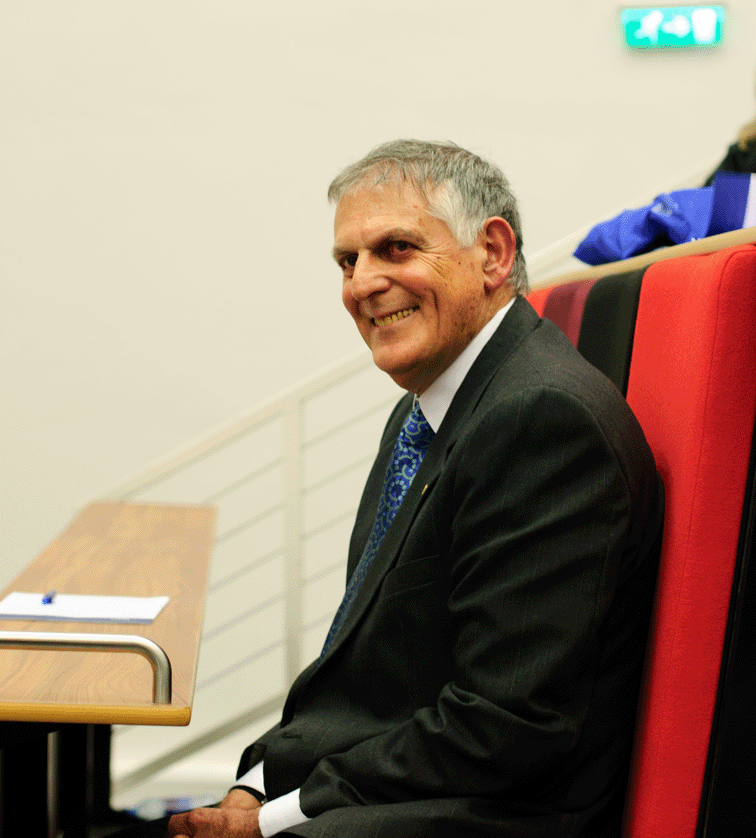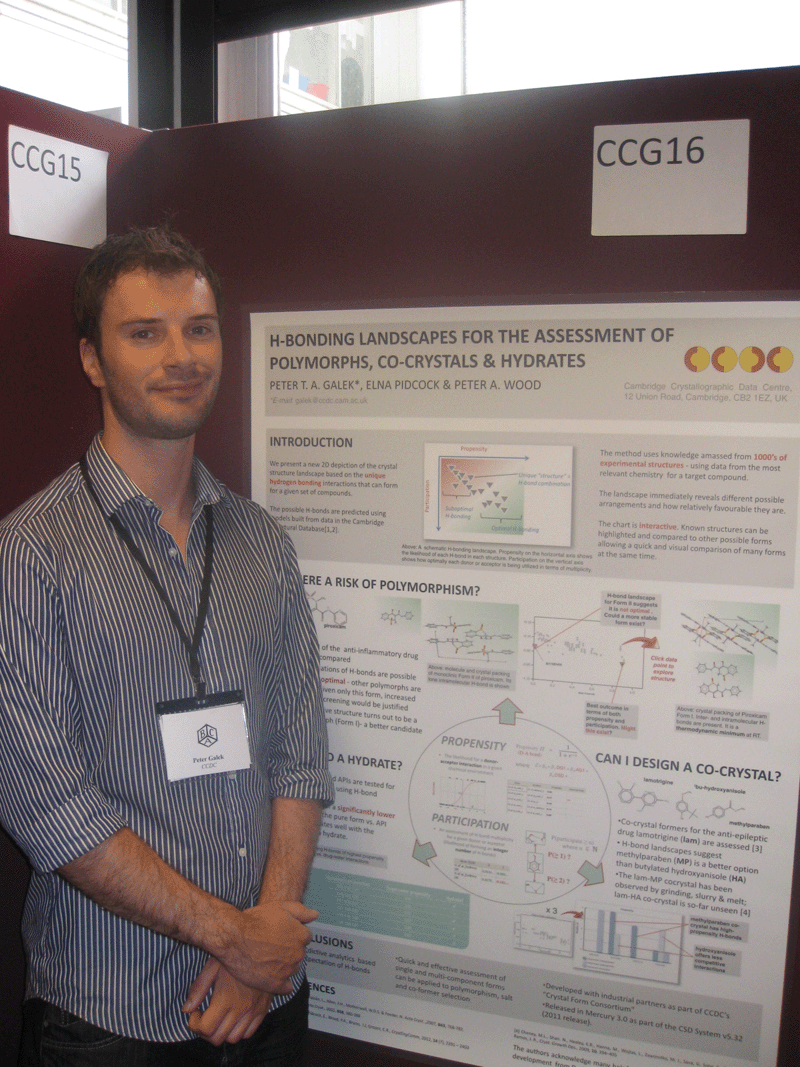I recently attended the 30th annual Spring meeting of the British Crystallographic Association at the University of Warwick from 16th-19th April 2012. The program was chaired by Kirsten Christensen (University of Oxford), and included a broad range of lectures from all areas of crystallography.
The Young Crystallographers Group satellite opened the meeting. This is an excellent forum for early stage researchers to present their work in a relaxed and friendly environment. There were 14 students talks in total, all of a very high standard, and two plenaries by Kenneth Shankland and Robin Owen. The Parkin Lecture was awarded to Lynne Thomas (University of Bath) for her outstanding work in outreach and crystallography. Jessica Bland from the Royal Society also came and spoke about the challenges and rewards of science communication, and encouraged everyone to get involved!
Back row: Robin Owen, Claire Murray, Andrew Maloney, Ed Pyzer-Knapp, Karun Arachige. Middle row: Jessica Bland, Alexander Graham, Marco Llamas, Soshichiro Nagano, Thembaninkosi Gaulle, Alan Martin. Front row: Richard Martin, Ioana Sovago, Lynne Thomas, Callum Young, Karim Sutton. With thanks to Allan Pang for the photograph.
The main meeting opened on the second day with a biological group plenary by Laurence Pearl (University of Sussex) discussing his work on the structural biology of the DNA damage response. The subsequent sessions covered multidimensional materials and multidimensional approaches. A forum for opening dialogue between small molecule and macromolecular crystallographers proved to be very popular, with plenty of questions flying between the two communities. Throughout the day there was an art installation by Fevered Sleep called ‘Stilled’ in Warwick arts centre, which used pinhole cameras to capture images of dancers. This was originally commisioned by the Wellcome Trust in 2008, and was very well received at the conference. The evening poster session was very busy, and there was lots of exciting crystallography to be seen and discussed.
The third day of the conference started with a chemical plenary by Robin Taylor in honour of Frank Allen (CCDC), probing the redundancy of crystal structure data. Whilst larger, more complicated structures require a lot more work, the advances in computational chemistry mean it is possible to predict many low energy conformers for smaller organic materials. The morning sessions included awards for early stage scientists. Gareth Lloyd (University of Cambridge) received the CCG/CCDC prize for his work on supramolecular gels. Jon Wright (ESRF) received the physical crystallography prize for his work on the Verwey transition of magnetite. The final award was from the industrial group for the best student talk, and this was awarded to Andrew Maloney (a PhD student in the group of Simon Parsons), who discussed his work on modifying the PIXEL method to calculate intermolecular interaction energies for transition metal complexes. After two sessions on hydrogen bonding, the industrial plenary was given by Dan Shechtman who presented a lively and illuminating overview of his nobel prize winning work on quasi periodic crystals. See my recent interview with Dan here.
Dan Shechtman pictured. With thanks to Allan Pang for the photograph.
The conference dinner included a ceili and the poster prizes. The CrystEngComm poster prize was awarded to Peter Galek (CCDC) for his poster on ‘H-Bonding landscapes for the assessment of polymorphs, co-crystals & hydrates’. Congratulations Peter!
CrystEngComm poster prize winner Peter Galek
The final day of the conference with the physical plenary by Branton Campbell (Brigham Young University) discussing his work on incommensurate structures using group theory enumeration. Sessions on phases transitions closed the conference. The next BCA Spring meeting will be held in Loughborough in 2014, and will be chaired by Lee Brammer (University of Sheffield).













